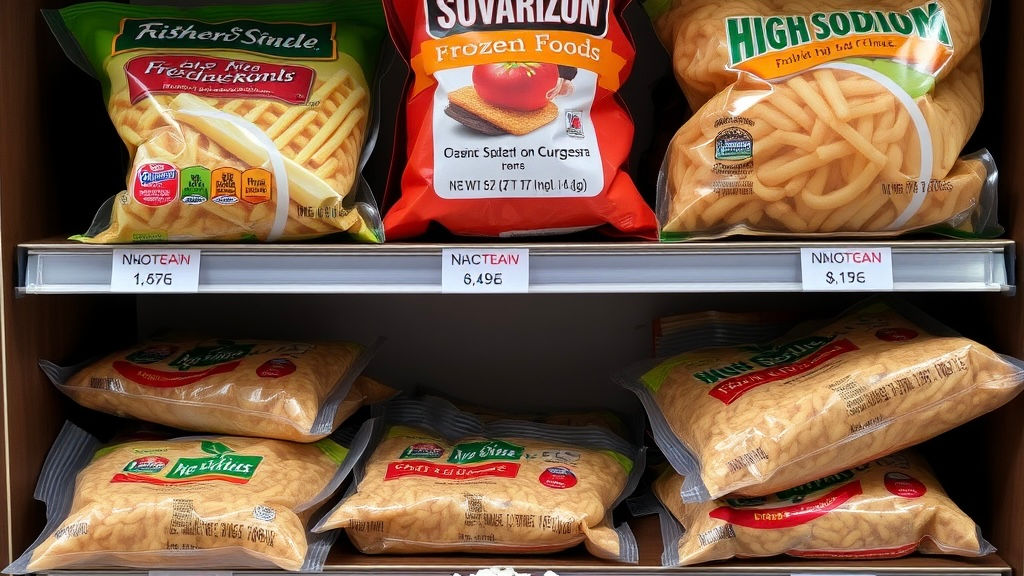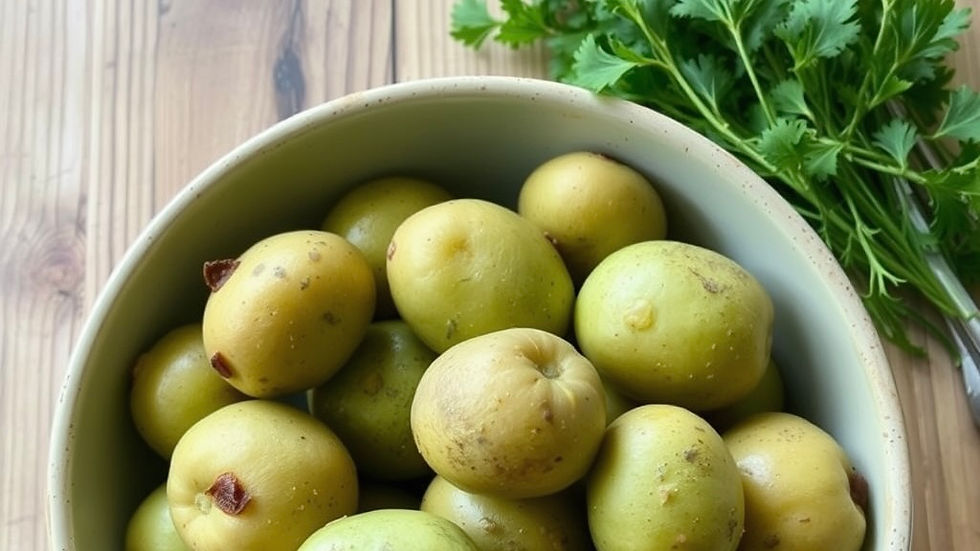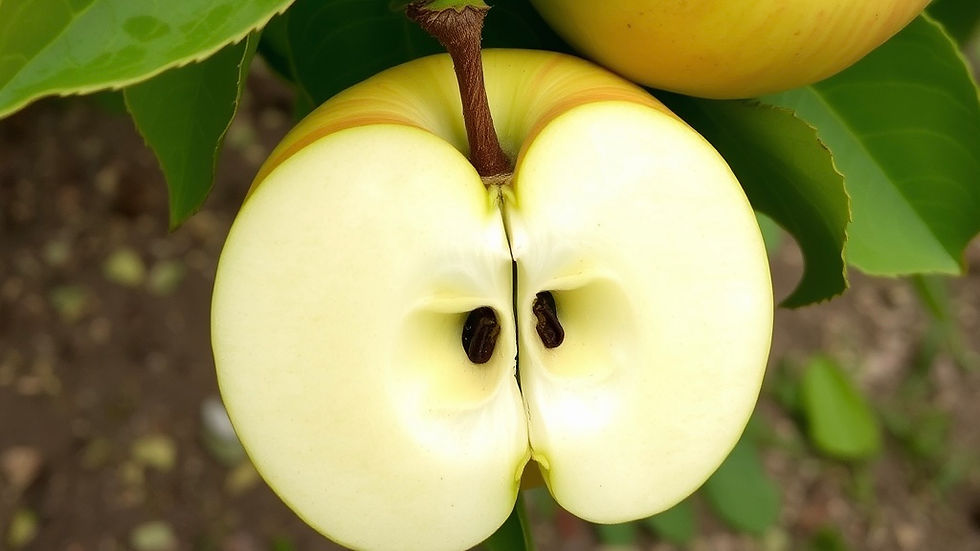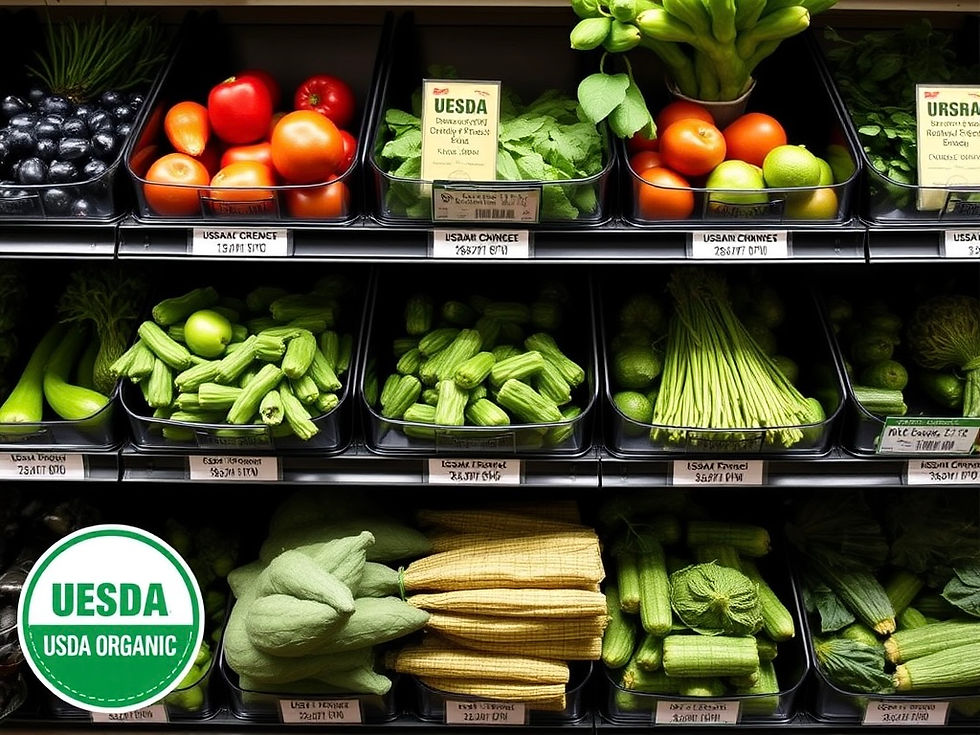
Why is this food so dangerous?
- mimic3554
- 3 days ago
- 6 min read
Updated: 1 day ago
Certain foods can pose health risks due to natural toxins, improper storage, contamination
1. Green Potatoes
• Why They’re Dangerous:
When potatoes are exposed to sunlight or improper storage, they can develop a green tint due to the production of chlorophyll and solanine, a toxic glycoalkaloid. Solanine can cause nausea, vomiting, diarrhea, stomach cramps, and, in severe cases, neurological symptoms like confusion or hallucinations. Levels above 200 mg/kg in potatoes are considered unsafe, and green or sprouted potatoes often exceed this.

• Risk Level:
Mild to severe, depending on the amount consumed. Small amounts of green potato may cause discomfort, while larger amounts (e.g., several green potatoes) can be more serious.
Precautions:
• Store potatoes in a cool, dark, dry place to prevent greening and sprouting.
• Peel away green parts and sprouts. If the potato is extensively green or tastes bitter, discard it.
• Avoid eating potatoes with significant green patches or sprouts, especially for children or pregnant women, who are more sensitive to toxins.
Foods with Natural Toxins
These foods contain naturally occurring compounds that can be harmful if not prepared or consumed properly.
• Red Kidney Beans (Raw or Undercooked):
• Why They’re Dangerous:
Contain phytohaemagglutinin, a lectin that can cause severe nausea, vomiting, and diarrhea. As few as 4-5 raw or undercooked beans can trigger symptoms. Cooking destroys the toxin.
• Risk Level:
Moderate to high if eaten raw or undercooked; low when properly cooked.
• Precautions:
Soak dried beans for at least 5 hours, discard the water, and boil for at least 10 minutes at a rolling boil. Canned beans are safe as they’re pre-cooked.
• Rhubarb Leaves:
• Why They’re Dangerous:
Contain oxalic acid and anthraquinone glycosides, which can cause kidney damage, nausea, and, in large amounts, severe toxicity. The stalks are safe but tart.
• Risk Level:
High if leaves are consumed; negligible for stalks.
• Precautions:
Only eat the stalks. Discard all green leafy parts. Avoid foraging rhubarb unless you can identify edible parts.
• Elderberries (Unripe or Raw):
• Why They’re Dangerous:
Unripe elderberries, leaves, and stems contain cyanogenic glycosides, which can release cyanide, causing nausea, dizziness, or worse. Fully ripened and cooked berries are safe.
• Risk Level:
Moderate to high if unripe or raw; low when cooked.
• Precautions:
Use only ripe, black elderberries and cook them thoroughly (e.g., in jams or syrups). Avoid homemade preparations with leaves or stems.
Bitter Almonds:
• Why They’re Dangerous:
Contain amygdalin, which can release cyanide in the body. Sweet almonds are safe, but bitter almonds (used in some extracts) are toxic in large amounts (e.g., 10-20 raw nuts can be dangerous for adults).
• Risk Level:
High if consumed raw in quantity; rare in commercial products.
• Precautions:
Avoid raw bitter almonds. Use only processed almond extracts labeled safe for consumption.
3.. Foods Prone to Contamination
These foods are more likely to harbor pathogens or toxins due to their nature or processing.
• Leafy Greens (Lettuce, Spinach):
• Why They’re Dangerous:
Frequently linked to E. coli, Salmonella, or Listeria outbreaks due to contamination from soil, water, or handling. The CDC reports leafy greens cause about 22% of foodborne illness outbreaks in the U.S.
• Risk Level:
Moderate, higher for pre-washed or bagged greens.
• Precautions:
Wash thoroughly under running water, even pre-washed greens. Cook greens if you’re immunocompromised or pregnant to kill pathogens.
• Rice (Cooked, Improperly Stored):
• Why They’re Dangerous:
Cooked rice can harbor Bacillus cereus, a bacterium that multiplies if rice is left at room temperature for too long. This can cause vomiting or diarrhea (“fried rice syndrome”).
• Risk Level:
Moderate if improperly stored; low if refrigerated promptly.
• Precautions:
Cool cooked rice within 1-2 hours and store in the fridge below 40°F (4°C). Reheat to at least 165°F (74°C).
• Soft Cheeses (Unpasteurized):
• Why They’re Dangerous:
Cheeses like brie, camembert, or queso fresco made from raw milk can carry Listeria, which is dangerous for pregnant women, infants, and immunocompromised individuals.
• Risk Level:
High for vulnerable groups; low for pasteurized versions.
• Precautions:
Choose pasteurized cheeses. Check labels for “made with pasteurized milk.” Avoid raw milk cheeses if at risk.
4. Foods with Hidden Additives or Long-Term Risks
These foods may pose risks due to additives, processing, or cumulative effects.
• Trans Fat-Containing Foods (e.g., Some Margarines, Packaged Snacks):
• Why They’re Dangerous:
Artificial trans fats (partially hydrogenated oils) are linked to heart disease and inflammation. While banned in many countries (e.g., U.S. since 2018), they may still appear in some imported or processed foods.
• Risk Level:
Long-term risk with regular consumption.
• Precautions:
Check ingredient lists for “partially hydrogenated oils.” Opt for whole foods or products labeled “trans fat-free.”
• High-Nitrate Processed Meats (e.g., Sausages, Deli Meats):
• Why They’re Dangerous:
Contain nitrates/nitrites, which are linked to colorectal cancer (WHO Group 1 carcinogen). High sodium content also raises heart disease risk, similar to frozen foods you mentioned.
• Risk Level:
Long-term risk with frequent consumption.
• Precautions:
Limit to occasional consumption. Choose nitrate-free options or pair with vegetables rich in vitamin C to reduce nitrate conversion to harmful compounds.
• Artificial Sweeteners (e.g., Aspartame, Saccharin in Excess):
• Why They’re Dangerous:
While deemed safe in moderation by the FDA, excessive consumption may cause digestive issues or headaches in sensitive individuals. Long-term effects are debated, with some studies suggesting potential metabolic impacts.
• Risk Level:
Low in moderation;
uncertain for heavy use.
• Precautions:
Use sparingly and prioritize natural sweeteners like honey or fruit where possible. Monitor for personal sensitivities.
5. Foods with Environmental Contaminants
These foods can accumulate toxins from their environment, posing risks over time.
• Certain Shellfish ( Oysters, Mussels):
• Why They’re Dangerous:
Can accumulate toxins from algal blooms (e.g., paralytic shellfish poisoning) or heavy metals like cadmium. Contaminated shellfish cause thousands of illnesses annually, per the CDC.
• Risk Level:
Moderate to high in contaminated waters; low from regulated sources.
• Precautions:
Buy from reputable suppliers. Avoid harvesting wild shellfish during red tide warnings. Cook thoroughly to reduce bacterial risks.
• Large Fish (e.g., Tilefish, Bluefin Tuna):
• Why They’re Dangerous:
Accumulate mercury and PCBs (polychlorinated biphenyls), which can harm the nervous system, especially in children and pregnant women. Tilefish from the Gulf of Mexico is among the highest in mercury.
• Risk Level:
Moderate with frequent consumption; low if limited.
• Precautions:
Follow FDA guidelines: limit high-mercury fish to 1-2 servings per week. Choose lower-mercury options like salmon or sardines.
6. Foods Requiring Careful Preparation
These are safe when handled correctly but dangerous if mishandled.
• Fugu (Pufferfish):
• Why They’re Dangerous:
Contains tetrodotoxin, a neurotoxin 1,200 times more potent than cyanide, which can cause paralysis and death. Improper preparation by untrained chefs is the main risk.
• Risk Level:
Extremely high if improperly prepared; rare in regulated settings.
• Precautions:
Only consume fugu from licensed chefs in countries with strict regulations (e.g., Japan). Avoid entirely elsewhere.
• Ackee Fruit:
• Why They’re Dangerous:
Unripe ackee contains hypoglycin A, which can cause “Jamaican vomiting sickness,” leading to severe hypoglycemia and potentially death. Ripe, properly prepared ackee is safe.
• Risk Level:
High if unripe; low when ripe and cooked.
• Precautions:
Only eat fully ripened ackee (when it opens naturally) and cook thoroughly. Avoid if unfamiliar with preparation.

Apple seeds are potentially dangerous
due to amygdalin, which can release cyanide, but the risk is low unless you intentionally chew and consume a large number (e.g., dozens of apple cores’ worth). Compared to green potatoes (which should be avoided if green), apple seeds are less concerning in everyday scenarios, as most people don’t eat them in quantity. They’re more akin to bitter almonds or unripe elderberries but less potent. To stay safe, simply avoid chewing or consuming apple seeds, especially in large amounts, and remove them when preparing apples for children or blending.
7. General Precautions for Food Safety
• Check for Spoilage:
Discard foods with off smells, unusual textures, or visible mold (except for hard cheeses, where mold can be cut away).
• Proper Storage:
Refrigerate perishable foods promptly (below 40°F/4°C). Freeze if not using soon to prevent bacterial growth.
• Safe Cooking:
Use a food thermometer to ensure meats, poultry, and seafood reach safe internal temperatures (e.g., 165°F/74°C for poultry).
• Allergen Awareness:
Be cautious of common allergens (e.g., peanuts, shellfish, soy) if you or others have sensitivities.
• Source Wisely:
Buy from reputable suppliers, especially for high-risk foods like seafood, sprouts, or raw dairy.
Comparison to Previous Examples
• Green Potatoes:
Like rhubarb leaves or unripe elderberries, green potatoes contain natural toxins (solanine), making them inherently risky if not handled properly. Foods like raw kidney beans or bitter almonds share this trait.
• High-Sodium Frozen Foods:
Similar to processed meats or some packaged snacks, these pose long-term risks due to additives (sodium, nitrates, trans fats) rather than immediate toxicity.
• Raw Garlic:
Less risky than many foods listed here, as its dangers (e.g., digestive irritation, blood-thinning effects) are milder and context-specific compared to, say, fugu or contaminated shellfish.



Comentarios